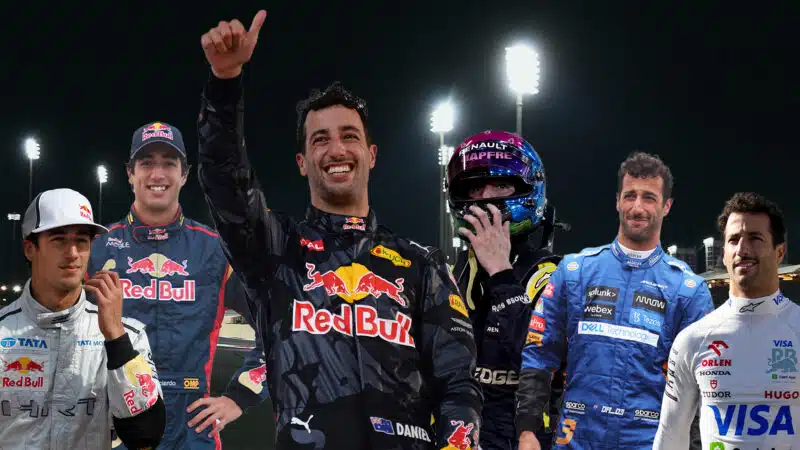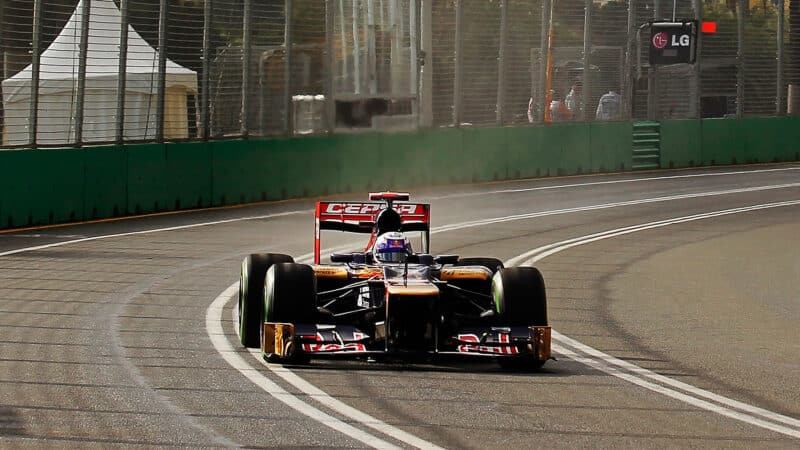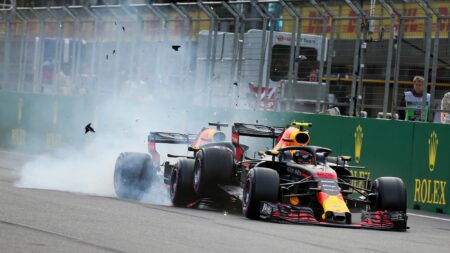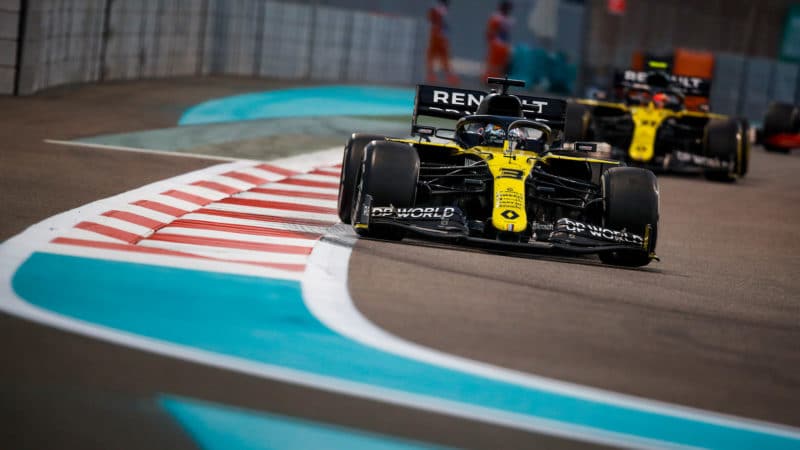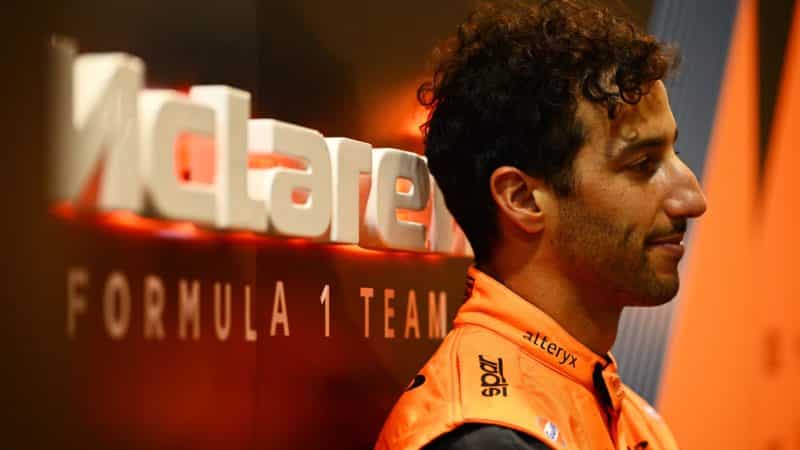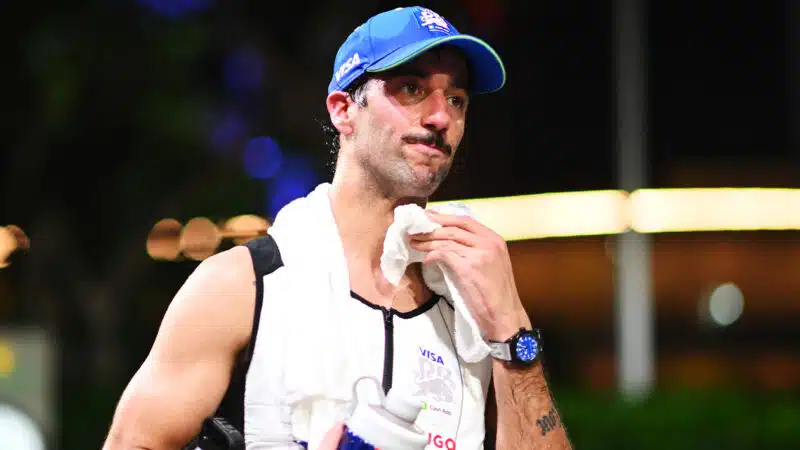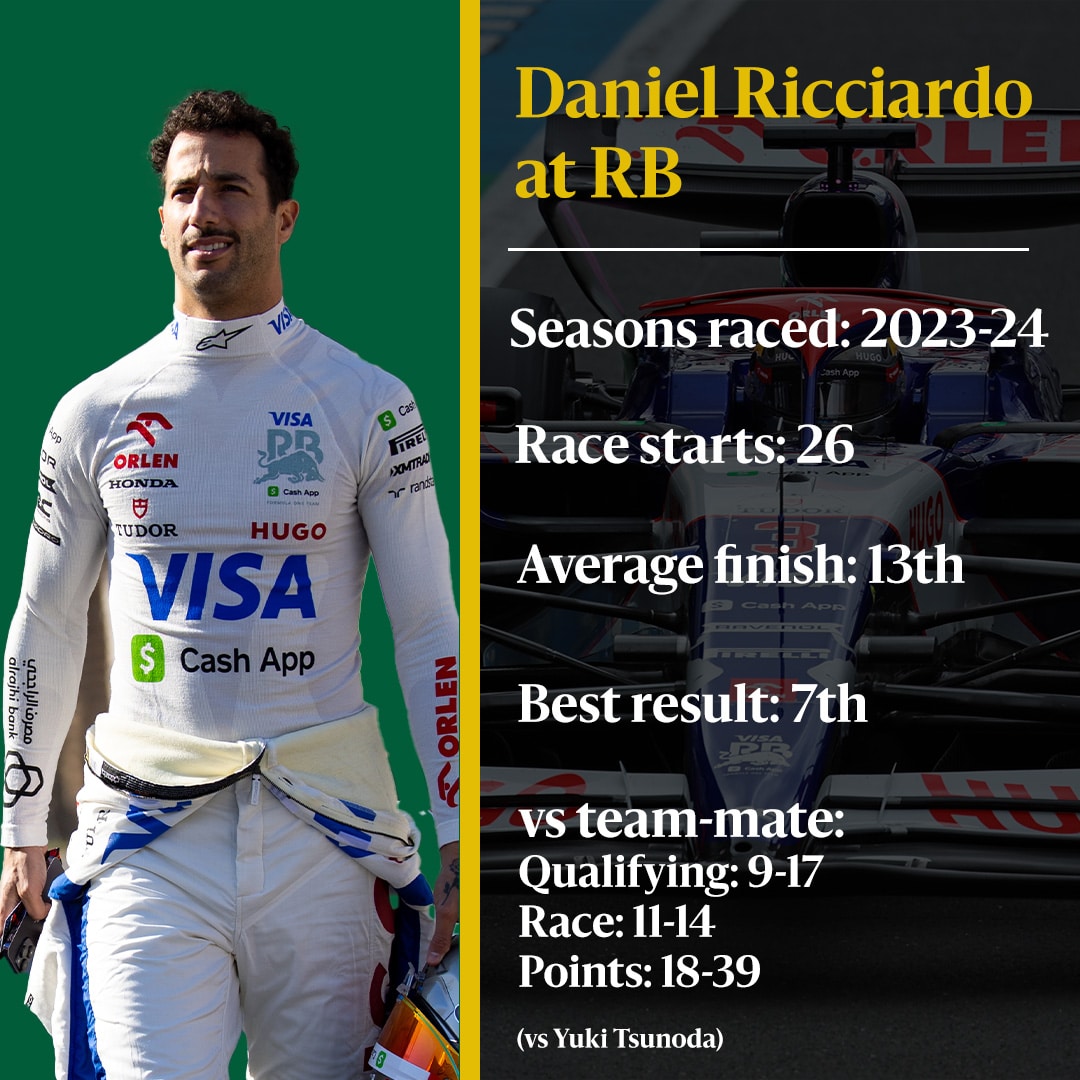It still wasn’t enough to beat Vergne in the season standings, as four eighth-place finishes in Malaysia, Belgium, South Korea and Brazil saw the Frenchman finish six points and a place clear of Ricciardo in 18th. But with Red Bull ace Mark Webber gearing up for retirement at the end of 2013, the two Torro Rosso drivers were suddenly competing for a team which had won every F1 world championship available since 2010 — instead of occasional points finishes.
Despite failing to finish 26.31% of the races he entered that year, Ricciardo still proved as the standout performer in the Faenza camp. A composed drive from seventh to seventh in China was soon followed by another top eight finish at Silverstone. Even with eight races remaining and Vernge ahead of him in the championship, the Red Bull bosses had seen enough. On September 3 2014, a week before the Italian GP, Ricciardo was announced as Sebastian Vettel‘s team-mate at Red Bull for 2014.
Ricciardo continued to prove that he was worthy gamble as the 2012 F1 season drew to a close. Three further top ten finishes, including another seventh-place finish at Monza, saw the Aussie double his points tally from the year before and finish seven points clear of Vernge in the drivers’ standings.
Daniel Ricciardo at Toro Rosso
| Wins | Podiums | Points | Drivers’ Standing | |
| 2012 | 0 | 0 | 10 | 18th |
| 2013 | 0 | 0 | 20 | 14th |
Red Bull (2014 – 2018)
Ricciardo at his best
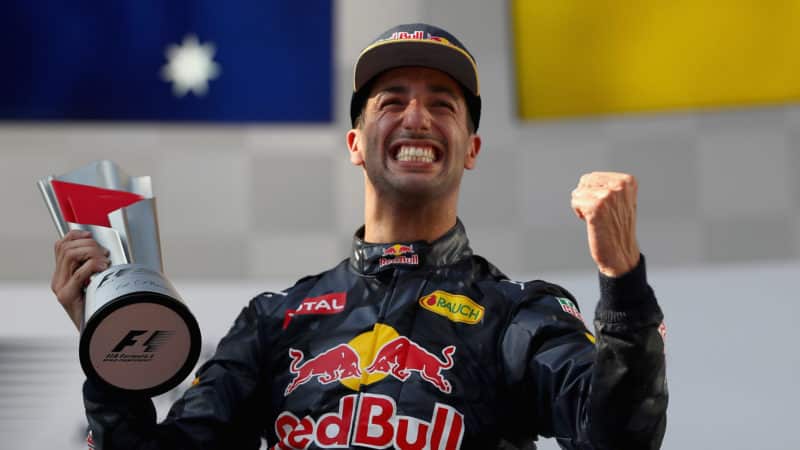
With the right team behind him, Ricciardo reached an awesome peak
Getty Images via Red Bull
The 2014 season was the dawn of a new era in Formula 1, as the introduction of hybrid engines saw a major reshuffle of the performance order. Mercedes became the dominant power, as Lewis Hamilton and Nico Rosberg split 16 race wins between them and marched with ease to drivers’ and constructors’ titles. They were only defeated three times. On each occasion it was Daniel Ricciardo’s Red Bull which took the top step.
The Aussie joined the Milton Keynes outfit as the clear number two to now four-time world champion Sebastian Vettel, but he was quick to make an impression. After qualifying on the front row of the grid in Melbourne, splitting the two Mercedes while his new team-mate lined up in 13th, Ricciardo showed dazzling race pace and met the chequered flag in second — only to be disqualified later on after breaching fuel consumption rules. A puncture at the following round in Malaysia doubled his bad luck.
But, fortunately for Ricciardo, a run of form soon came. Back-to-back podium finishes came in Spain and Monaco, but were immediately trumped by a debut victory in Montreal. Starting from sixth on the grid, the 24-year-old cruised through the field ahead — taking advantage of a Mercedes brake issue — and passed Rosberg for the lead with just two laps remaining.
Further wins followed in Hungary (after starting from fourth) and in Belgium (after starting from fifth), keeping the Aussie in mathematical reach of the drivers’ title with just three races remaining — despite Mercedes’ dominance. Ultimately he had to settle for third — 71 points and two places clear of Vettel, who secured only four podiums across the year; finished ahead of Ricciardo in only five grand prix and failed to win a single race.
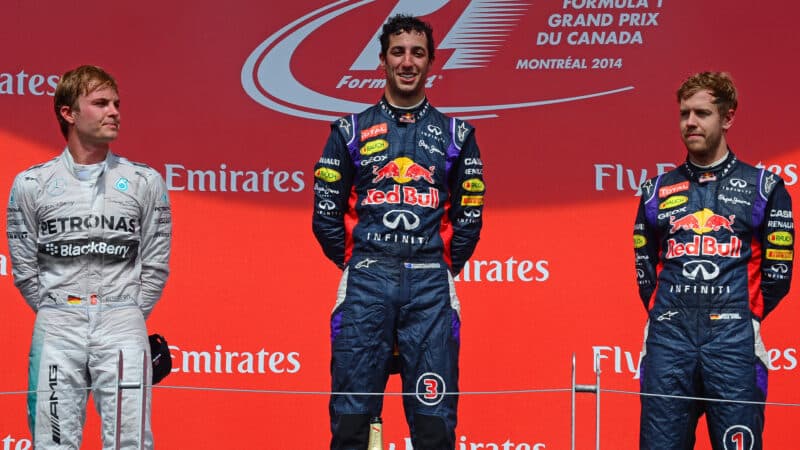
Daniel Ricciardo heads the podium for the first time in Montreal
Grand Prix Photo
The F1 landscape shifted again in 2015 as Vettel moved to Ferrari, Daniil Kvyat arrived to replace him and Red Bull suffered through numerous engine troubles which dropped it back into midfield contention. Ricciardo’s performance suffered dramatically as a result: finishing eighth in the drivers’ standings (three points behind Kvyat).
